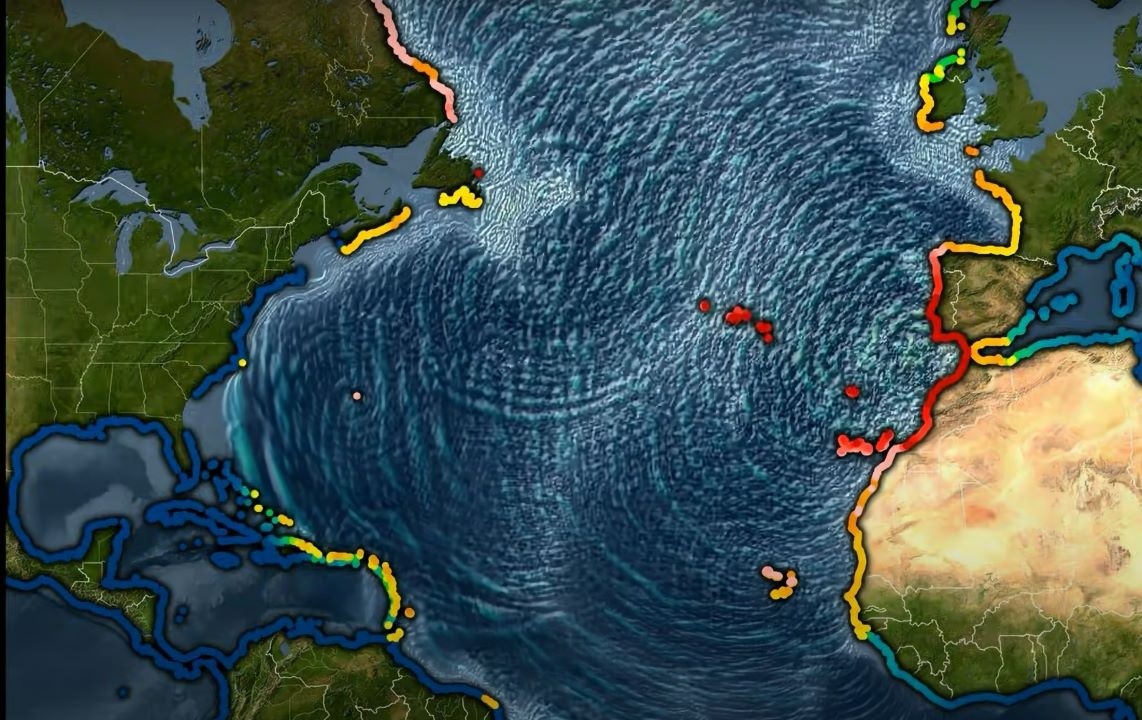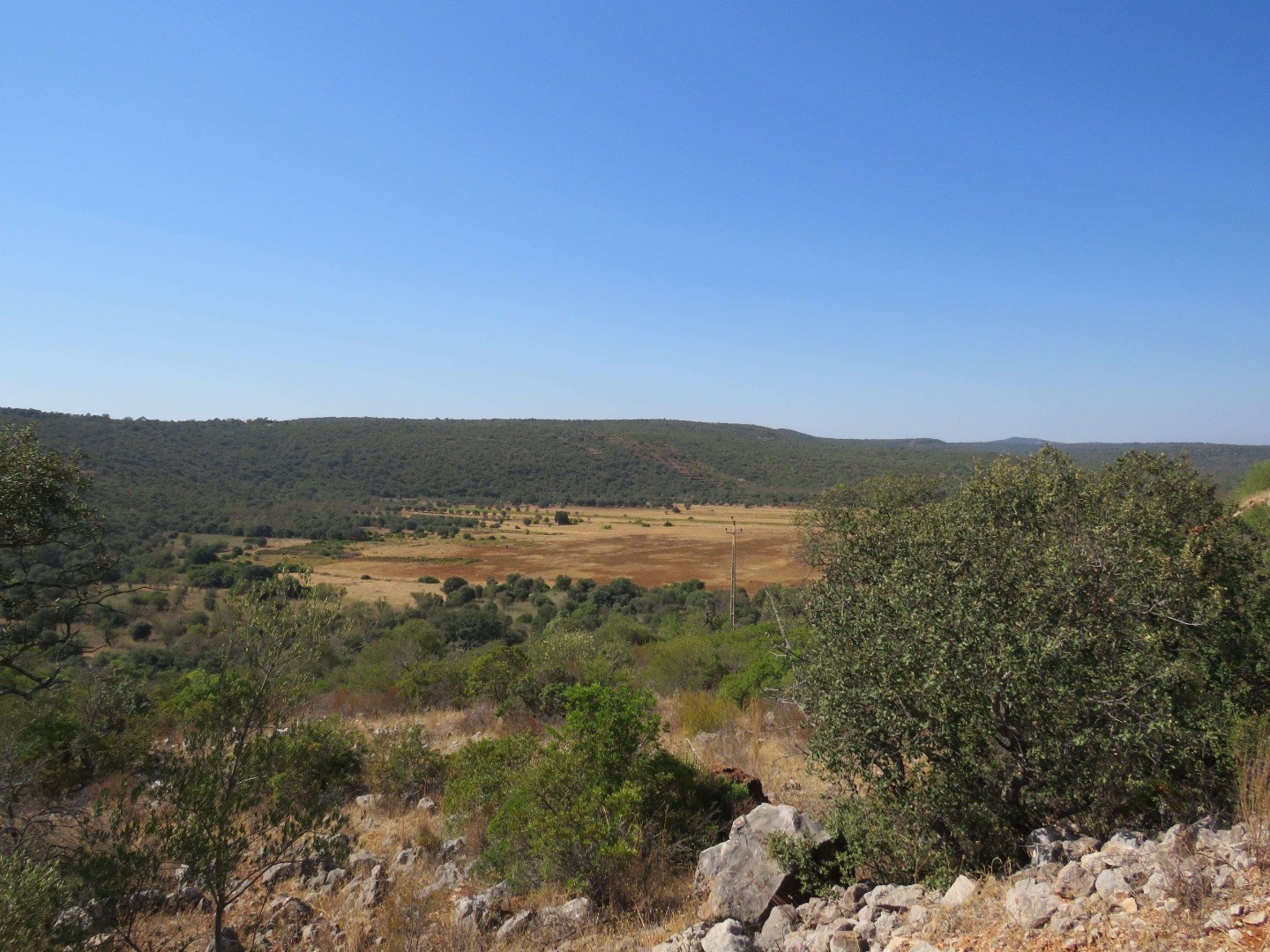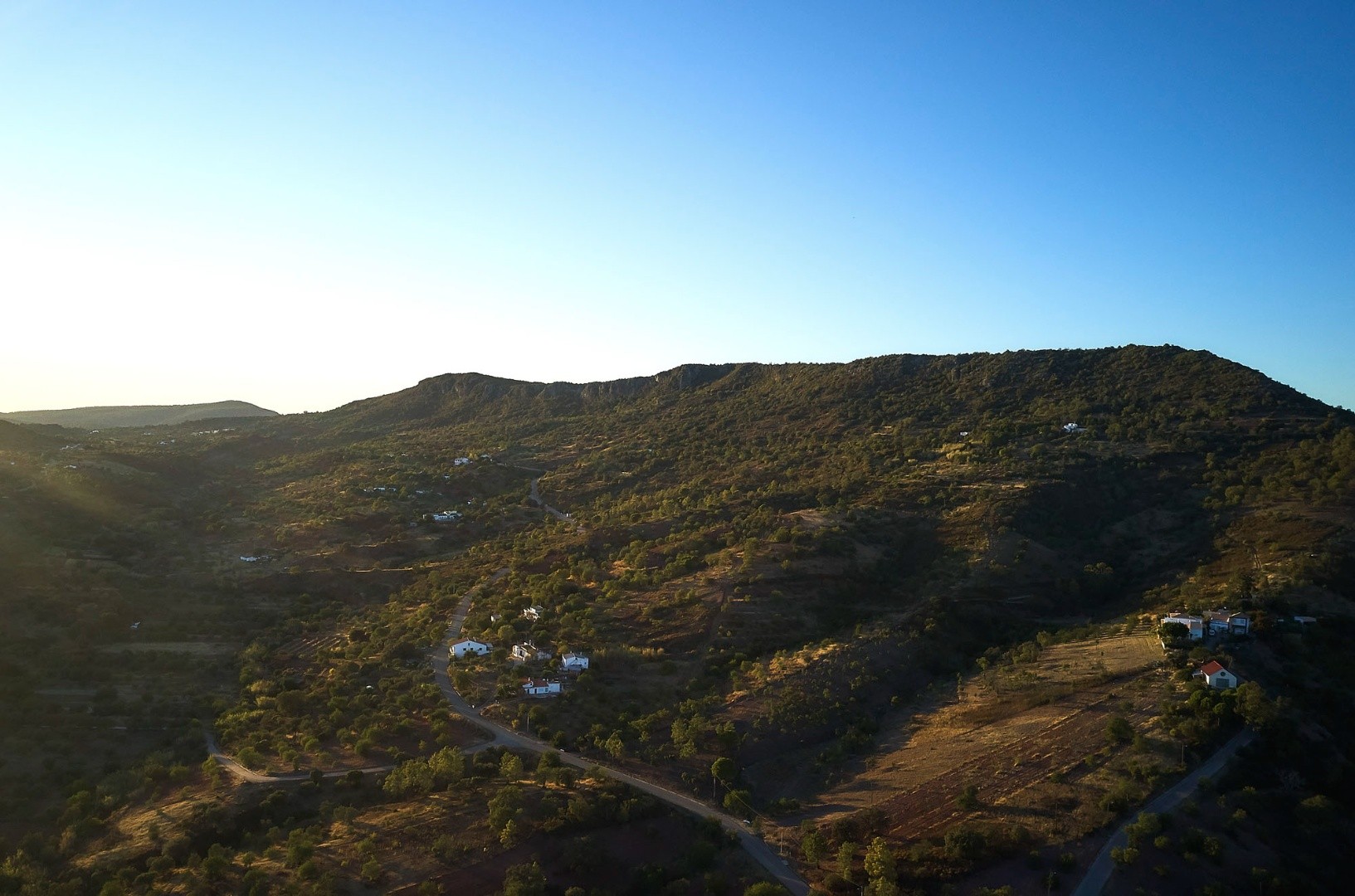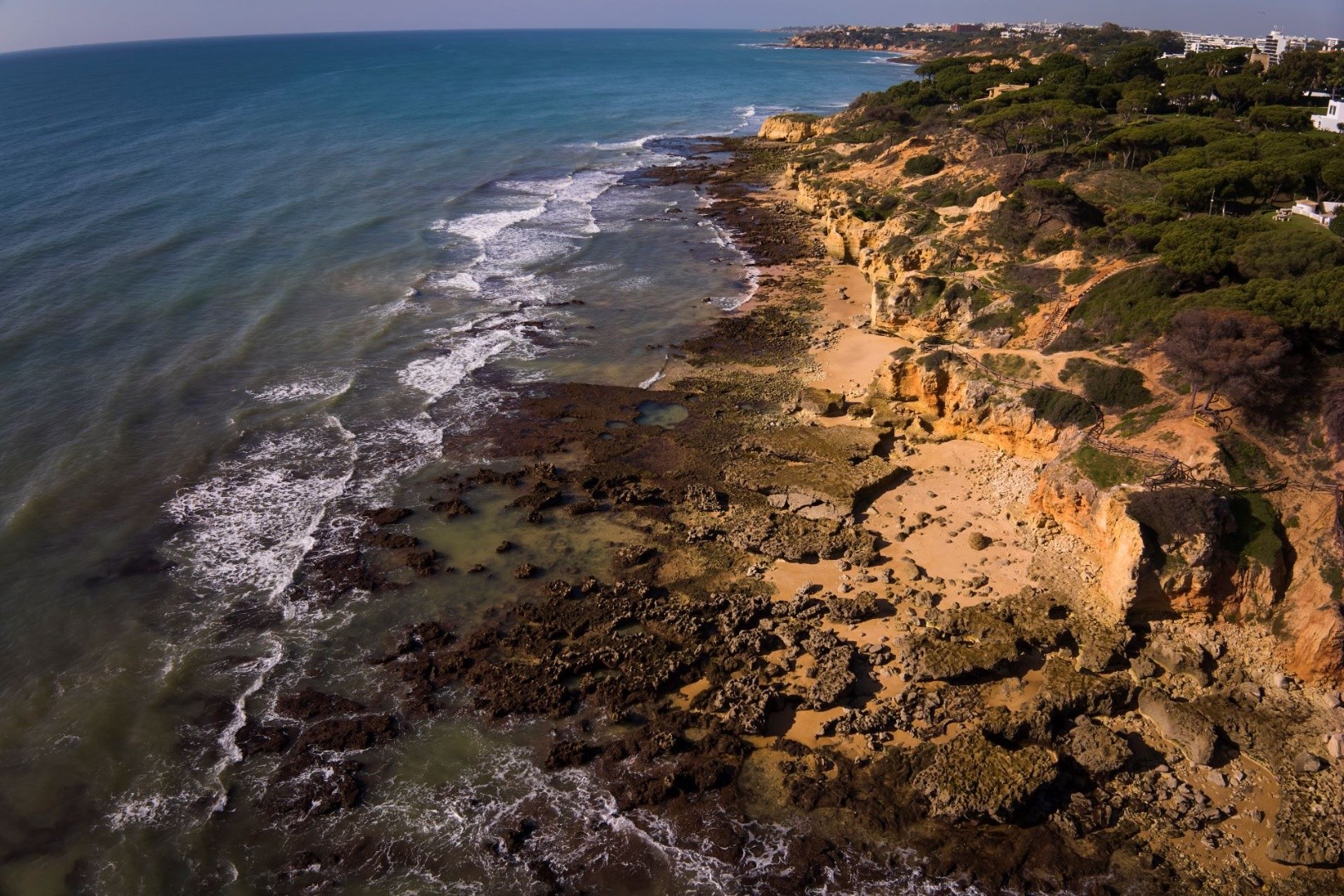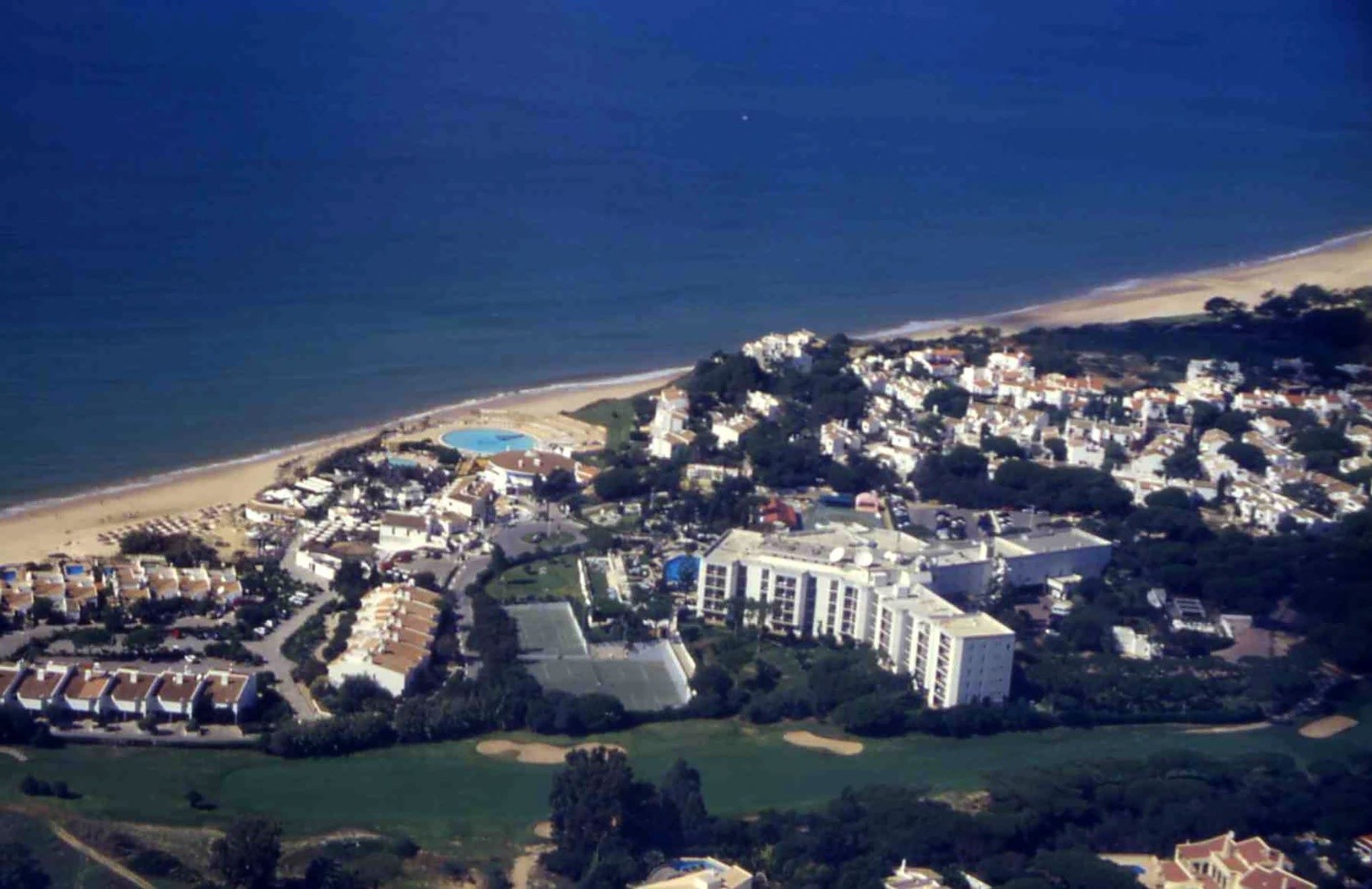GEOMORPHOLOGY
The Escarpão Plateau rises to an altitude of 130 meters and is crossed by the Quarteira Stream. On the banks of this stream, one can observe various layers of sedimentary limestone that reveal the geological history of ancient tropical seas that once existed in this area. This location is of great geological significance because it preserves one of the most complete records of the Upper Jurassic period, which lasted from 161 to 145 million years ago, in the central and eastern Algarve.
The sedimentary rocks in this region are predominantly limestone, containing fossils of marine animals that inhabited these ancient oceans. Notable fossils include belemnites (ancient relatives of squids), ammonites (similar to modern nautiluses), and various types of molluscs and corals. In addition to these visible fossils, microfossils have also aided scientists in identifying different geological ages and the environmental conditions under which these layers were deposited. The fossils indicate that the limestones of the Escarpão Plateau were formed on a shallow carbonate platform in tropical seas.
Beyond its geological importance, the Escarpão Plateau plays a crucial role in recharging the groundwater of various aquifer systems in the Algarve, including the Albufeira-Quarteira Stream aquifer, which serves as an important underground water reservoir. Signs of human occupation in the region can also be observed, with ancient dry-stone walls, irrigation channels (levadas), and small dams (açudes) illustrating how people have historically utilised natural resources.
From the southwest viewpoint at the Castle of Paderne, one can admire the relief of the Escarpão Plateau and its impressive layers of limestone rocks, which are visible along the valley eroded by the Quarteira Stream. A journey along the Escarpão Plateau offers a fascinating glimpse into a tropical sea from the Upper Jurassic period!
Location: Escarpão - Albufeira
Coordinates: 37.157238, -8.200057





